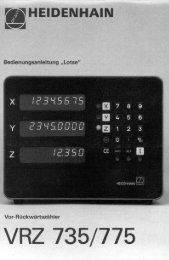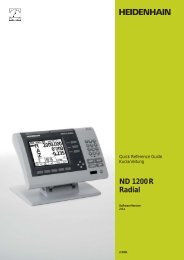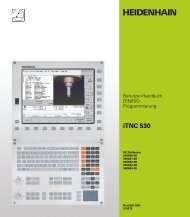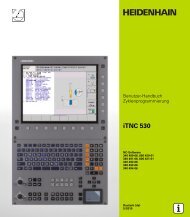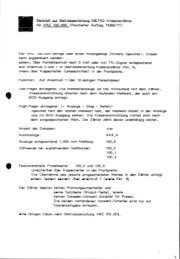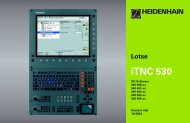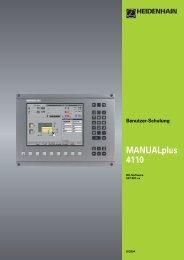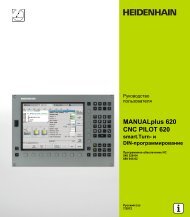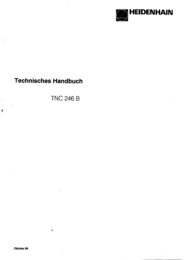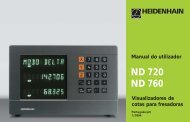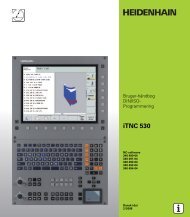34169621 - heidenhain - DR. JOHANNES HEIDENHAIN GmbH
34169621 - heidenhain - DR. JOHANNES HEIDENHAIN GmbH
34169621 - heidenhain - DR. JOHANNES HEIDENHAIN GmbH
Create successful ePaper yourself
Turn your PDF publications into a flip-book with our unique Google optimized e-Paper software.
Fundamentals<br />
4<br />
Fundamentals<br />
You can skip this chapter if you are already familiar with<br />
coordinate systems, incremental and absolute dimensions,<br />
nominal positions, actual positions and distance-to-go.<br />
Coordinate system<br />
The Cartesian1) coordinate system is used to describe the geometry of<br />
a workpiece. The Cartesian coordinate system consists of three<br />
mutually perpendicular axes X, Y and Z. The point of intersection of<br />
these axes is called the datum or origin of the coordinate system.<br />
Think of the axes as scales with divisions (usually in millimeters) which<br />
allow us to fix points in space referenced to the datum.<br />
To determine positions on a workpiece, the coordinate system is<br />
“laid” onto the workpiece.<br />
The machine axes are parallel to the axes of the coordinate system.<br />
The Z axis is normally the tool axis.<br />
1) Named in honor of the French mathematician and philosopher<br />
René Descartes (1596 to 1650)<br />
Y<br />
–X<br />
+Y<br />
Z<br />
+Z<br />
–Z<br />
Graduation<br />
–Y<br />
X<br />
+X<br />
Datum or origin



